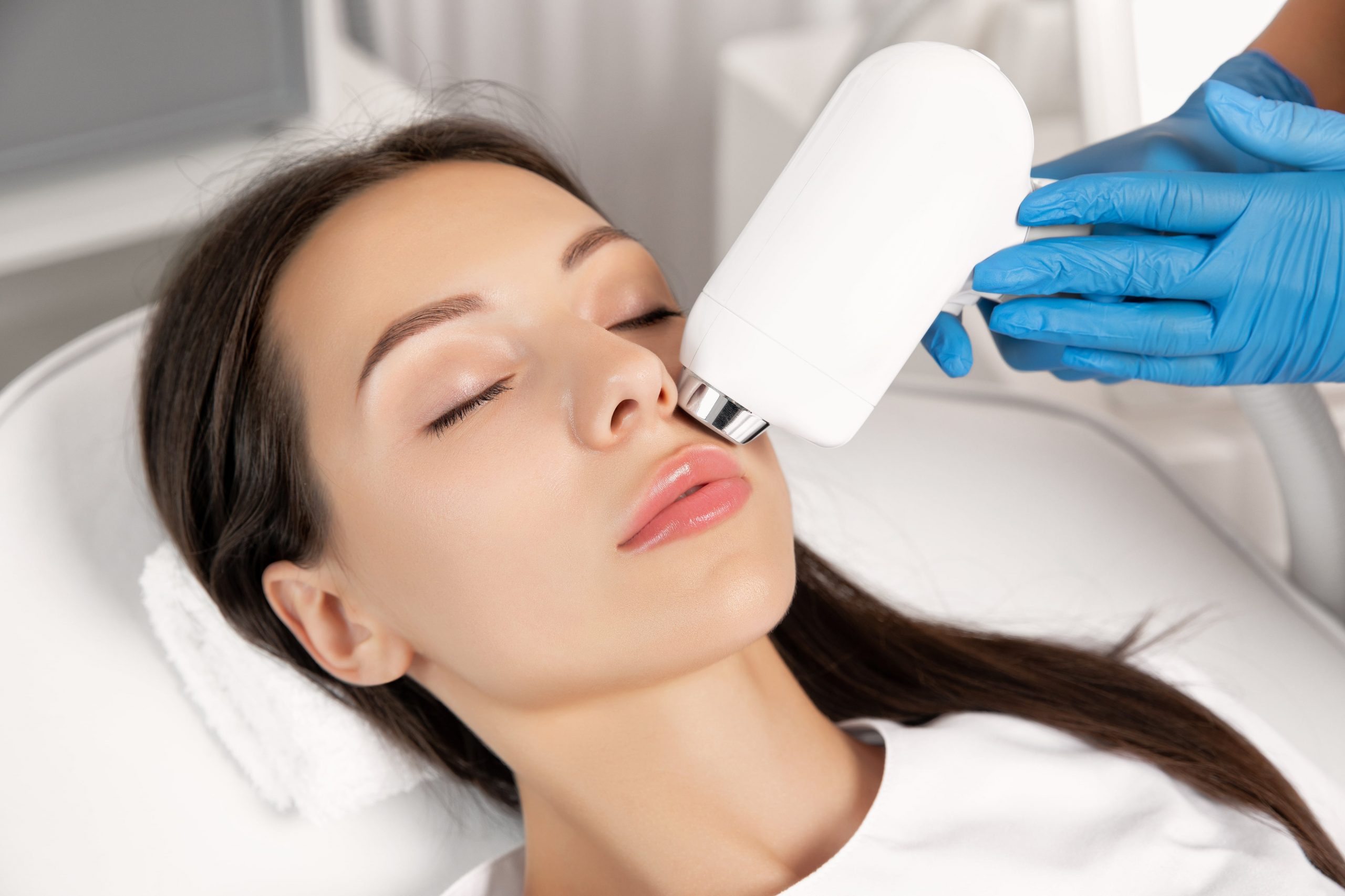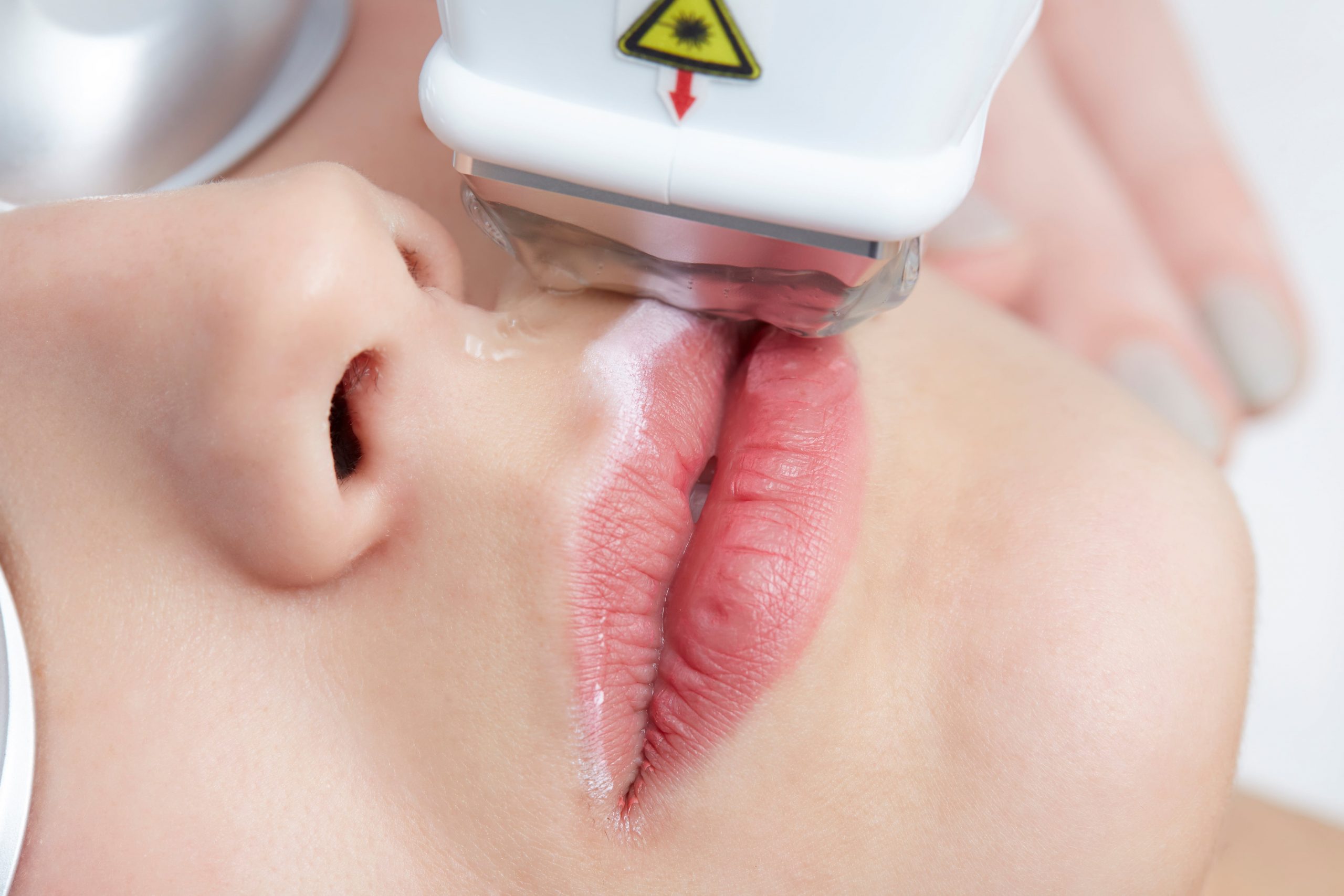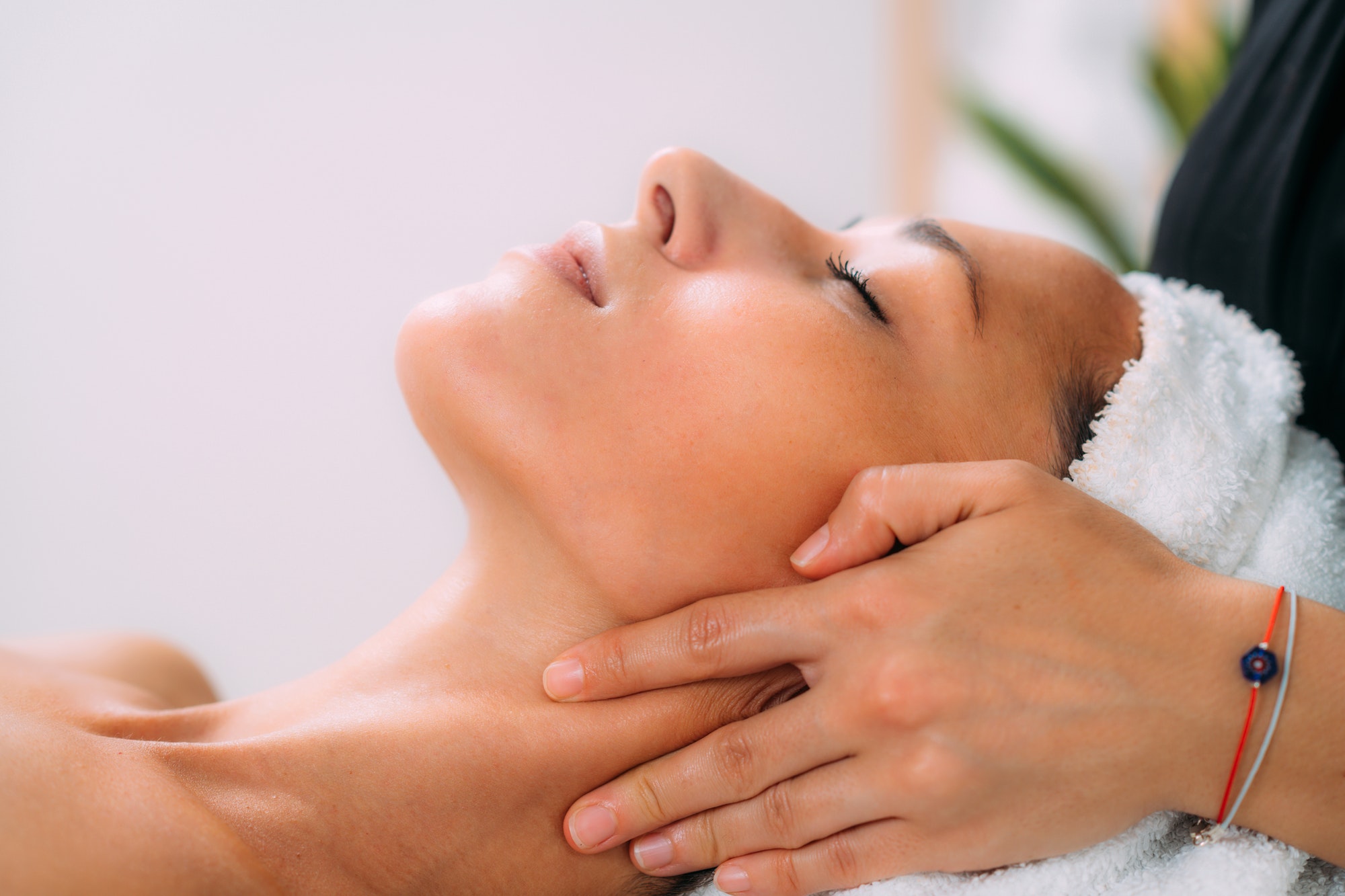You may slather on sunscreen religiously before heading out or have said goodbye to hours of baking under the sun, but those years of tanning by the pool or at the beach could have indelible consequences on your skin’s health and appearance. It’s a good thing there are specific cosmetic treatments like intense pulsed light or IPL laser facial therapy to help you with your skin woes today.
If you notice dark brown spots, freckles, and premature wrinkles on your skin or you have a blotchy complexion, these are all byproducts of sun damage. But with an IPL laser facial, these types of sun damage can all be addressed.
However, IPL laser facial therapy has other uses and benefits beyond eliminating the effects of sun damage. If this treatment is new to you or you need more information about it, here are some essential facts about IPL therapy and what it can do for you.
The basics of IPL laser facial therapy
As previously mentioned, IPL laser facials are a type of skin treatment. IPL is somewhat similar to conventional laser therapy in that it makes use of light energy to treat skin issues.
However, with laser therapy, only a single wavelength of light energy is delivered during treatment. With IPL, multiple wavelengths of light are delivered to the skin, so it can be administered to treat a larger portion of skin. This means that IPL laser facials can be used to treat certain skin conditions faster than laser therapy.
IPL laser facial therapy targets and removes pigmented or damaged skin cells or hair follicles with great precision using light energy emitted from a hand-held device. The heat from an IPL laser can remove freckles, dark spots, skin pigmentation, and unwanted hair.

How IPL laser facial therapy works
During IPL treatment, a broad spectrum of light (similar to a camera flash) is precisely and safely delivered into the second layer of the skin known as the dermis.
Here, the concentrated light energy is turned into heat, thereby causing microscopic lesions in the skin. This sends the body into repair mode and prompts the skin cells to produce collagen and elastin. The result is firmer skin, as well as a noticeable reduction in fine lines and wrinkles.
One other primary target of IPL is melanin, a dark skin pigment. IPL destroys melanin cells, effectively eliminating freckles, dark spots, and other skin discoloration caused by sun damage. After the treatment, the dark spots usually turn into scabs and flake away; else, the body’s lymphatic system and natural elimination process get rid of the damaged tissue.
IPL therapy can also be used to target hemoglobin, the red protein found in red blood cells. This is why IPL can help eliminate facial redness caused by thin capillary vessels.
Uses and benefits of IPL laser facial therapy
Today, there are several types of skin resurfacing treatments to choose from. As such, it could get quite difficult to choose the right facial treatment.
But by knowing the uses and benefits of IPL therapy, you’ll have a better basis for making your selection. You might even end up getting an IPL laser facial soon.
1. IPL therapy is highly recommended for treating photo damage.
Sun-damaged skin can benefit from IPL laser facial therapy as the treatment gets rid of skin discoloration, melasma, and other imperfections caused by exposure to UV radiation.
This form of deep exfoliation then leads to the next step, which is the production of new collagen needed to replenish what sun exposure has essentially destroyed. After the skin heals from the treatment, firmer, more youthful, and supple skin is revealed. You’ll also have a noticeably even, dewy complexion.
2. IPL therapy can be used as an effective acne treatment.
IPL laser facials can effectively kill harmful bacteria that cause acne. It also helps to reduce inflammation and redness, and get rid of scar tissue by triggering skin regeneration.
However, prior to getting an IPL laser facial, you might be asked to avoid using acne medications (topical and systemic) for as long as six months. Also, IPL therapy for acne is recommended only for those who are not getting any substantial results from acne medication.
3. IPL therapy can prevent premature aging when administered regularly.
Intense pulsed light laser facial therapy has a unique ability to alter the structure of skin cells so they act more like young cells. A Stanford University study showed that two to three sessions of IPL per year altered the genes of facial cells to resemble young and healthy skin cells. When this happens, you are effectively delaying aging by a couple of years.
4. IPL therapy can be used to get rid of unsightly veins and capillaries.
If you suffer from rosacea, broken capillaries, spider veins, and visible blood vessel abnormalities, an IPL laser facial could be an effective treatment method. It works by dissolving or destroying any problems in the blood vessels at a cellular level. IPL therapy is sometimes used to treat birthmarks and stretch marks as well.
5. IPL therapy can be combined with other non-surgical facial treatments.
IPL laser facials can be administered in combination with other non-surgical therapies like dermal fillers and injectable treatments such as BOTOX®. For example, IPL can’t target sensitive spots like the skin around the eyes — something that BOTOX® can help firm up.
Dermal fillers, on the other hand, can help to replace lost facial volume and fill deep creases in the skin, thereby boosting the overall impact of IPL laser facial therapy.
6. IPL laser facial therapy requires minimal downtime.
Even when IPL therapy is done for deep skin rejuvenation, it is considered gentle enough so as not to cause side effects like persistent skin irritation, redness, and swelling. One reason for this is that the light energy emitted in an IPL treatment is not as concentrated as the one that’s used in a conventional laser beam.
In fact, some people who have just had an IPL facial can already put on some makeup and go back to work in 24 to 48 hours. This means that getting an IPL laser facial doesn’t and won’t interfere with your personal or work life.
7. IPL therapy is fast and convenient.
A typical IPL treatment usually lasts anywhere from 30 minutes to an hour, so it won’t eat up a huge chunk of your day or interfere with your plans. Patients who experience some mild discomfort during IPL therapy describe it as something akin to being hit with a rubber band.
8. IPL therapy is relatively affordable.
How much IPL laser facial therapy costs depends on your location and the level of experience of your care provider. In general, however, IPL therapy is considered one of the more affordable treatment options, even when compared with other laser treatments.
9. IPL therapy can also be used on other parts of the body that need rejuvenation.
Aside from the face, other parts of your body can benefit from skin rejuvenation, such as the neck, décolletage or upper chest, arms, hands, shoulders, and legs. By getting IPL therapy for photo-damaged skin on other parts of your body, you can achieve an overall youthful appearance.
10. IPL therapy can be used for unwanted hair removal.
If you want to get rid of unwanted facial or body hair, IPL laser therapy can help. In fact, this procedure can remove unsightly hair very quickly by destroying target hair follicles with heat and preventing further hair growth.
All in all, IPL therapy can effectively rejuvenate the skin and restore its youthful vitality. It can also get rid of broken capillaries, veins, and blood vessels, as well as facial and body hair — and it does so in a fast and efficient manner.
How to prepare for IPL therapy
If you decide to undergo IPL laser facial therapy and your dermatologist or physician finds you to be a good candidate, you also need to prepare your skin for the procedure to get the best results.
Below are some preparatory steps you can take seven days to four weeks before the procedure:
- Avoid tanning altogether four weeks before the IPL therapy session. This includes using tanning creams and beds, as well as direct sun exposure.
- Do not wax or get collagen shots or chemical peels two weeks prior to your IPL treatment.
- Keep skin irritants off your skin, including makeup, perfume, and deodorant.
- Do not take aspirin, anti-inflammatory drugs, herbal supplements, or other medications that can cause you to bleed more.
- Avoid taking medicine that can make you photo sensitive, such as doxycycline — an antibiotic used to treat acne, respiratory infections, eye infections, urinary tract infections, intestinal infections, certain STDs, etc.
- Discontinue using retinol or any retinoid several days before the IPL procedure and several days to a month after the procedure.
When you go for your IPL laser facial, the dermatologist or technician will rub some gel on your clean skin. Since light energy will be used during the session, you’ll have to wear a dark pair of glasses or protective eye gear to shield your eyes.
They will then use the hand-held IPL device on your body to target the problem areas. A typical session can last for 20 or 30 minutes, but if larger areas are being treated, it could take an hour or more.
You might feel a strange sensation as the light pulses are applied, and some people report that the treatment stings a bit.
If you are particularly sensitive, your dermatologist can apply some numbing cream, chilling gel, or a local anesthetic about a half hour to an hour before the IPL therapy is administered.
The number of treatment sessions varies with each patient as it depends on what is being treated. This means it can take you a couple of weeks to experience noticeable results.
Tips after undergoing IPL therapy
The treated areas can get swollen and appear pinkish or reddish immediately after the IPL therapy session. But in a matter of 24 hours or so, these after-effects should dissipate.
In the meantime, the treated areas may darken or become discolored. Other blemishes might start to appear also — which you should take as a sign that the treatment is working. These will eventually disappear as the skin cells begin to regenerate and produce more collagen.
While waiting for your skin to recover after IPL therapy, consider the following:
- Slather on sunscreen (at least SPF 30) every day.
- Always moisturize your skin at least twice a day.
- Avoid harsh chemicals and use a gentle facial cleanser with warm water to cleanse your skin twice a day.
- Do not apply cosmetics or makeup at least 12 to 24 hours post-treatment.
- Never pick the scabs or scratch your skin. Let the blemishes surface and flake away naturally.
- Avoid exercising for 48 hours.
- Do not take hot showers or baths or soak in tubs for at least 48 hours; take warm showers instead.
- Two to three weeks after your last IPL therapy session, get a facial with microdermabrasion to remove dead skin cells and reveal youthful, healthier skin.
There’s no downtime required after an IPL laser facial, so you can resume your usual routine immediately after the treatment. The only thing you absolutely must avoid is direct sun exposure for five to seven days after your IPL therapy session.

Duration of IPL results
IPL therapy is an effective treatment for sun damage and other skin problems. Although you might observe some improvements after the first session, the number of treatments required and how long before you’ll see significant differences depend on what you are being treated for.
However, with complete sessions and succeeding regular IPL therapy once or twice a year, you can continue enjoying the skin-revitalizing benefits of IPL laser facial therapy. This entails making IPL therapy a part of your skincare regimen.
Who should not undergo IPL therapy
Although IPL laser facial therapy is generally safe, both pregnant women and people taking blood-thinning medication shouldn’t have it. Aside from these, other conditions can make you unsuitable for IPL therapy:
- You have active acne.
- You are taking Accutane.
- You are very dark-skinned.
- You are photo (light) sensitive.
- You tanned your skin recently.
- You are suspected of having skin cancer.
- You have a skin resurfacing allergy or disorder.
- You have severe scars or are susceptible to keloid scarring.
- You had a severe sunburn recently.
You also need to be aware of IPL risks or possible complications like skin discoloration, swelling, pain, infection, bleeding, crusting, and scarring.
Ready for your first IPL therapy session?
If you’re a good fit for an IPL laser facial and are ready to experience the skin-rejuvenating benefits of this treatment, then by all means, schedule an appointment.


